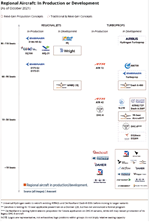REGENT begins next phase of seaglider prototype development
REGENT features the full-scale Viceroy seaglider prototype, made of composites, as it begins hardware and systems integration.
Regional Electric Ground Effect Nautical Transport Craft Inc. (REGENT, North Kingstown, R.I., U.S.) announces it has begun hardware and systems integration of its full-scale composites-intensive seaglider prototype, a step forward in the company’s goal to advance regional coastal mobility. The Viceroy seaglider prototype is said to provide technical validation of full-scale operations and offer the opportunity to experience seaglider travel.
Over the next few months, REGENT will be assembling major structural components and installing the critical onboard systems, including motors, batteries, electronics, mechanical systems and vehicle control software. REGENT will begin sea trials with humans on board later in 2024.
After coming up with the idea for the seaglider in 2020, REGENT designed and operated a quarter-scale prototype over a period of 18 months, conducting hundreds of hours of on-water tests todemonstrate seaglider flight. In spring 2023, the company unveiled a full-scale seaglider mockup.
REGENT has been developing and conducting rigorous tests of the seaglider subsystems via physical and emulated tests. The company says it takes advantage of digital twin technology to simulate real-world testing and plants to verify these tests on the water with.
REGENT recently received approval from the U.S. Coast Guard for its Navigational Safety Risk Assessment, which enables the company to test the prototype in Narragansett Bay and Rhode Island Sound. This followed an extensive third-party analysis of navigational safety and consultation, with more than 20 local stakeholders on environmental concerns and economic impacts from operations.
REGENT plans to test the prototype’s three modes: floating on the hull at the dock and in speed-restricted waterways, foiling on wave-tolerant hydrofoils in marked channels and commercially navigable waterways, and flying over the open water in ground effect, always staying within one wingspan of the surface of the water.
“We’ve proven seagliders can successfully float, foil and fly — the integration phase is a moment that brings us closer to experiencing float, foil and fly firsthand,” says Billy Thalheimer, co-founder and CEO of REGENT. According to a recent global survey, 86% of coastal residents would be interested in using a seaglider for regional coastal travel.
REGENT has secured more than 600 seaglider orders, valued at more than $9 billion from airline, ferry, freight and lessor operators around the world.
Related Content
-
Revisiting the OceanGate Titan disaster
A year has passed since the tragic loss of the Titan submersible that claimed the lives of five people. What lessons have been learned from the disaster?
-
Plant tour: BeSpline/Addcomp, Sherbrooke, QC, Canada
Composites automation specialist increases access to next-gen technologies, including novel AFP systems and unique 3D parts using adaptive molds.
-
Nlcomp launches recyclable composite sailing boat Ecoracer30
Italian startup featured its 30-foot sustainable production boat at the Ocean Race Grand Finale in Genoa, Italy, citing the challenges, highlights and future related to its development.















